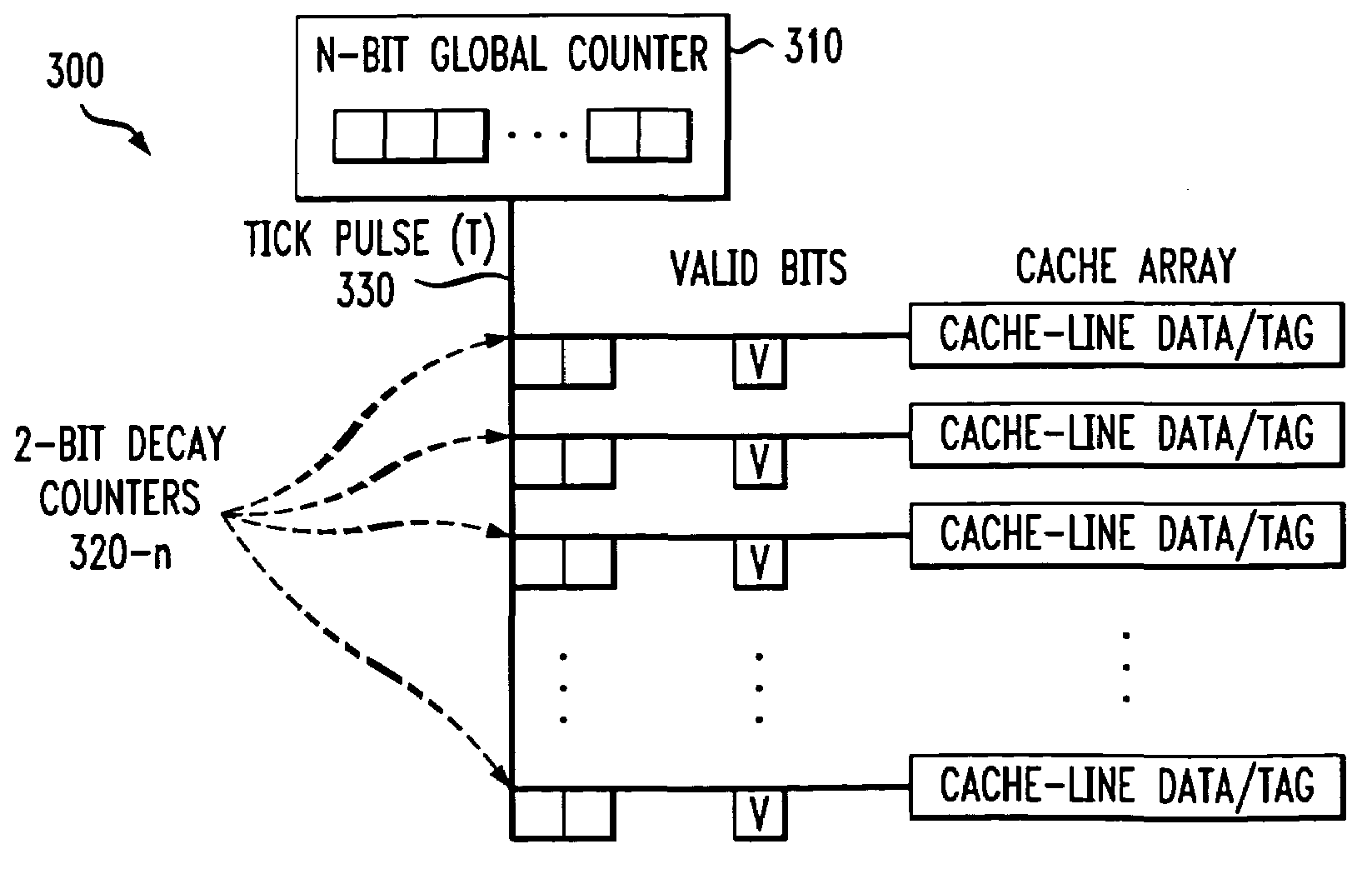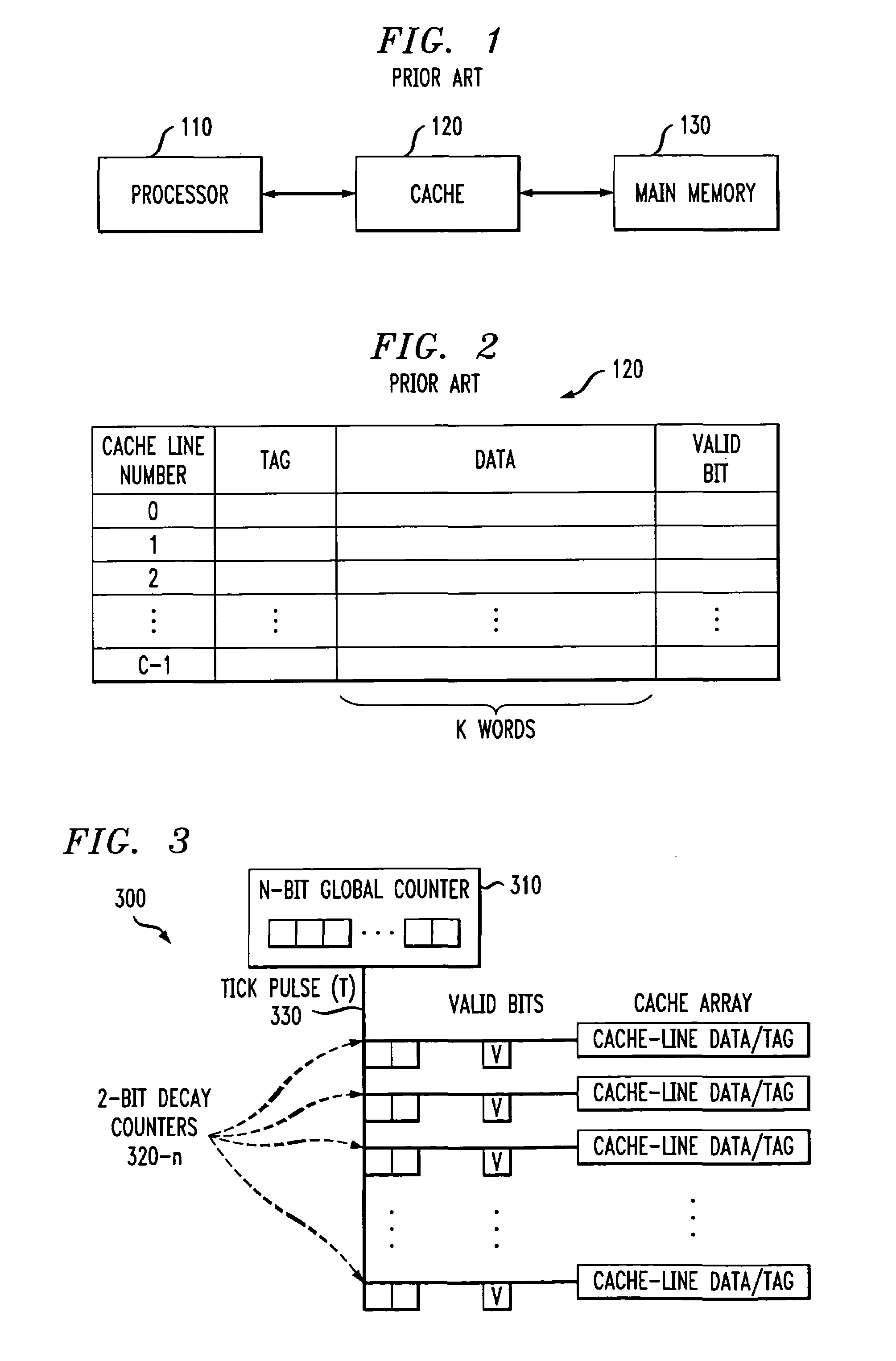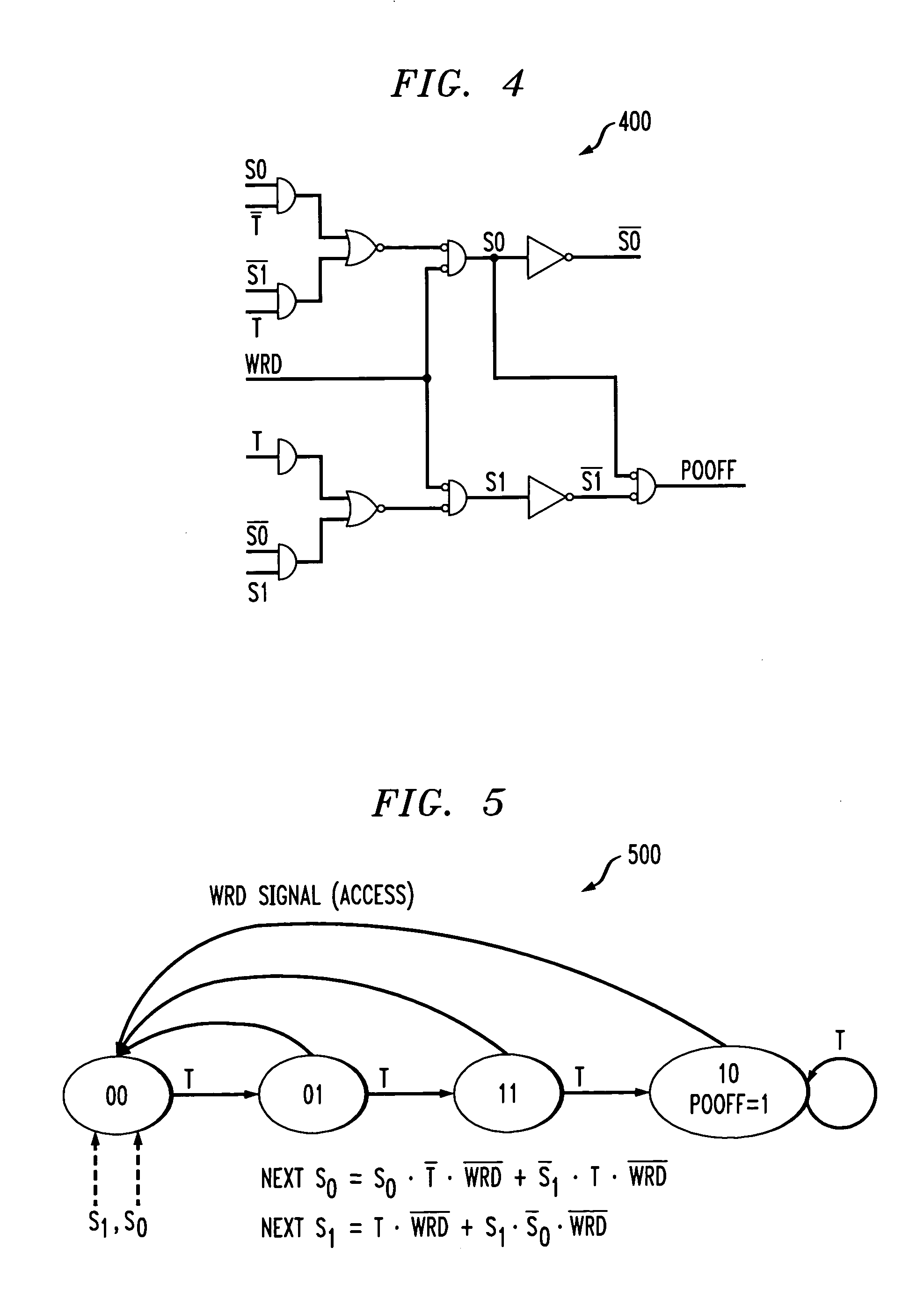Method and apparatus for reducing leakage power in a cache memory by using a timer control signal that removes power to associated cache lines
a cache memory and power dissipation technology, applied in the direction of memory adressing/allocation/relocation, instruments, liquid/fluent solid measurement, etc., can solve the problem that leakage power is expected to become a significant factor in the total power dissipation of the chip, and achieve the effect of reducing power consumption, reducing leakage power dissipation, and reducing leakage power
- Summary
- Abstract
- Description
- Claims
- Application Information
AI Technical Summary
Benefits of technology
Problems solved by technology
Method used
Image
Examples
Embodiment Construction
[0020]FIG. 2 illustrates the structure of the conventional cache memory 120 of FIG. 1 in further detail. As shown in FIG. 2, the cache memory 120 consists of C cache lines of K words each. The number of lines in the cache memory 120 is generally considerably less than the number of blocks in main memory 130. At any time, a portion of the blocks of main memory 130 resides in lines of the cache memory 120. An individual line in the cache memory 120 cannot be uniquely dedicated to a particular block of the main memory 130. Thus, as shown in FIG. 2, each cache line includes a tag indicating which particular block of main memory 130 is currently stored in the cache 120. In addition, each cache line includes a valid bit indicating whether the stored data is valid.
[0021]The present invention provides a cache decay technique that removes power from cache lines that have not been accessed for a predefined time interval, referred to as the decay interval. The decay interval may be variable to...
PUM
 Login to View More
Login to View More Abstract
Description
Claims
Application Information
 Login to View More
Login to View More - R&D
- Intellectual Property
- Life Sciences
- Materials
- Tech Scout
- Unparalleled Data Quality
- Higher Quality Content
- 60% Fewer Hallucinations
Browse by: Latest US Patents, China's latest patents, Technical Efficacy Thesaurus, Application Domain, Technology Topic, Popular Technical Reports.
© 2025 PatSnap. All rights reserved.Legal|Privacy policy|Modern Slavery Act Transparency Statement|Sitemap|About US| Contact US: help@patsnap.com



